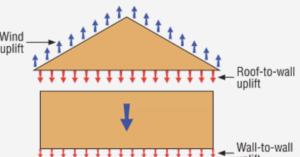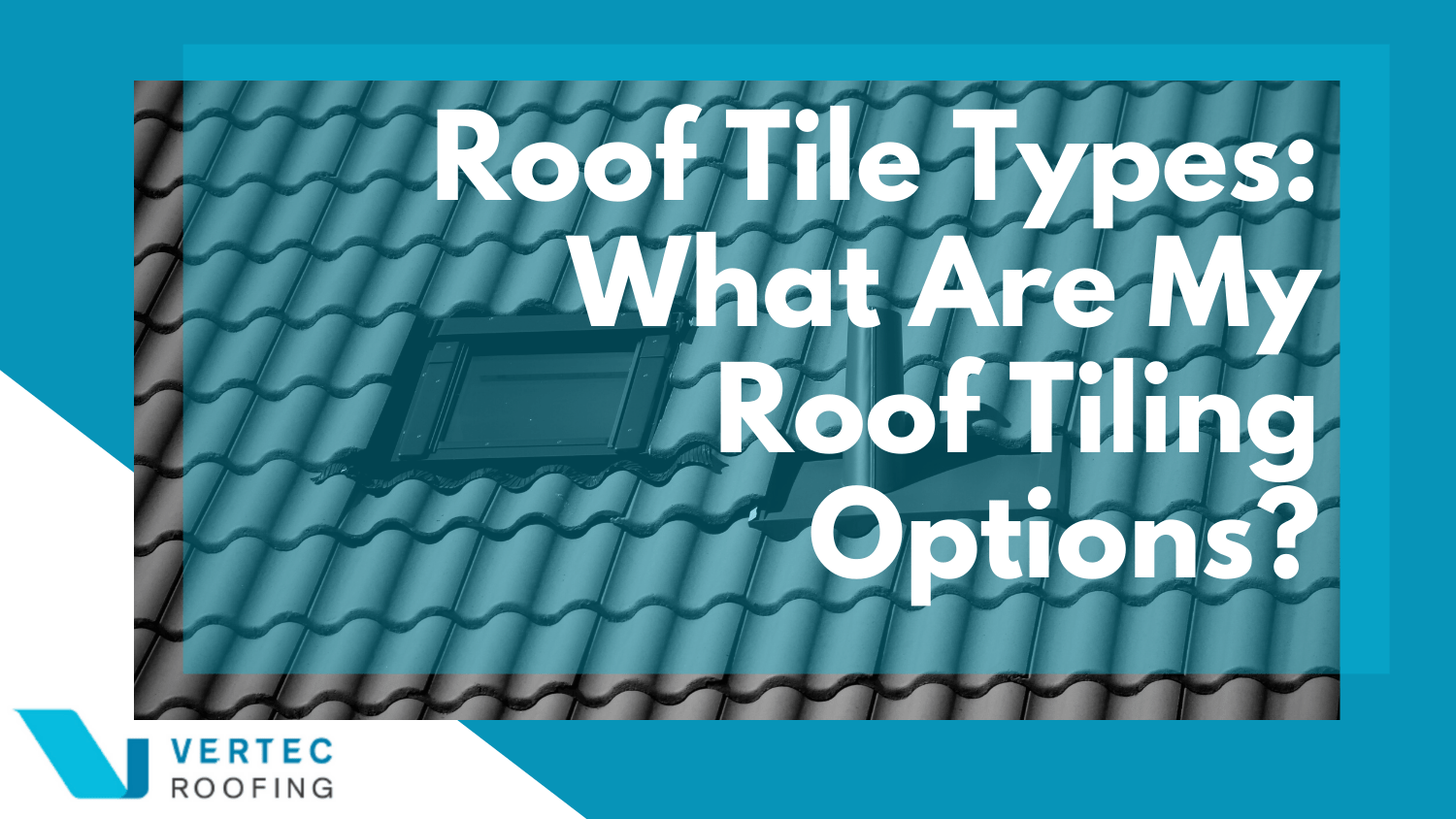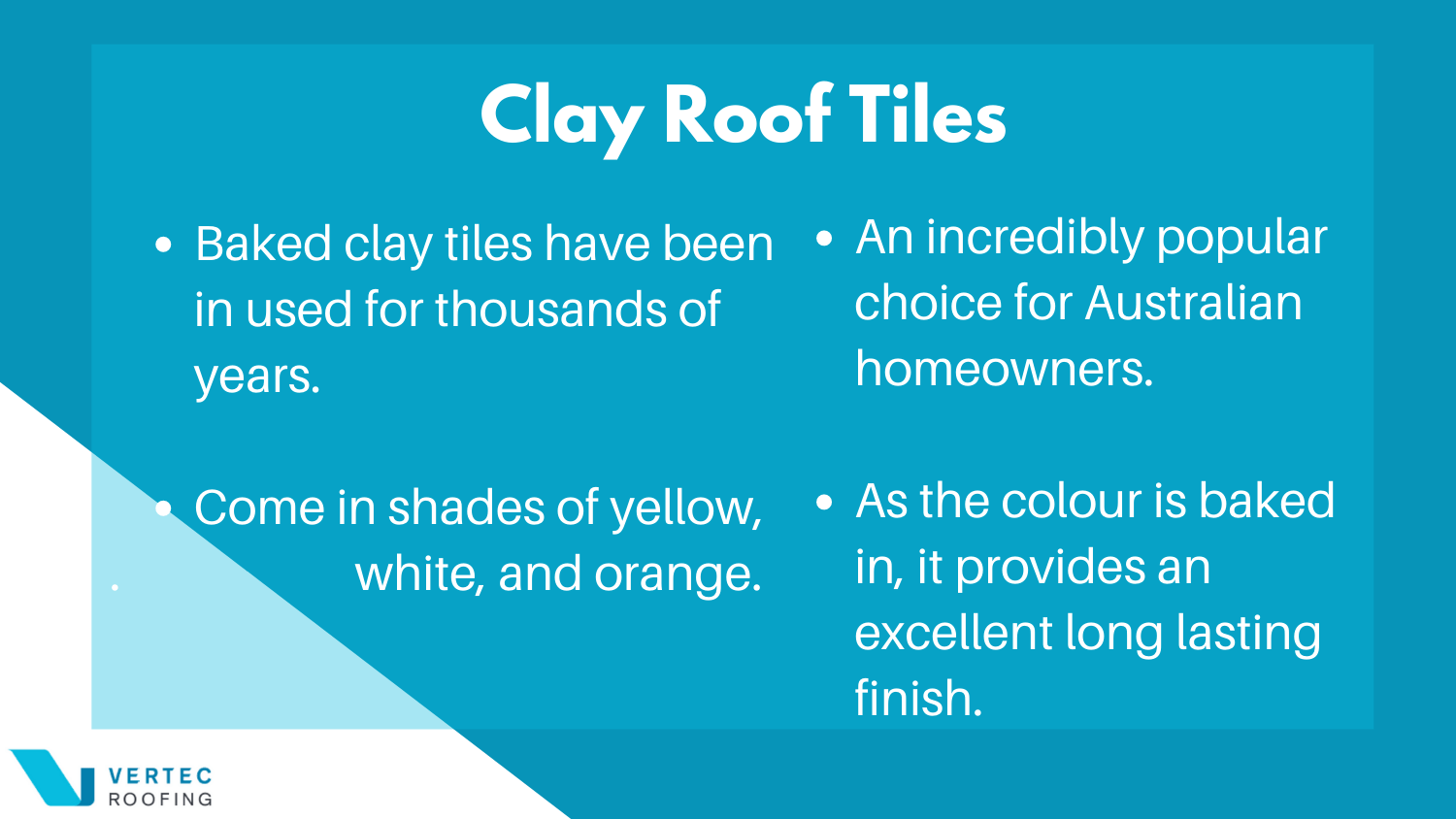

What are the different types of roof tiles available? And which tiles are going to be the best for my roof?
Roof tiles offer flexible, low maintenance and durable solutions for your property. Various companies and manufacturers produce tiles from an assortment of materials, each with unique performance aspects. This article will cover the different and best roof tiles used on Australian tile roofs to help you make the best decision on locally available materials for your next roofing project.
While many roofing materials are available on the market, such as metal sheeting and shingles, tiled roofs have long endured as a popular and reliable choice for Australian homes. Tiles can be purchased at various price points and in a wide variety of finishes, making them an incredibly popular choice. Roof tiles are traditionally made from terracotta, clay, or slate; however, today, you can also buy extruded tiles made of concrete and even solar composite roof tiles!
Tiles are laid out across and supported with sarking and seals to ensure reliable protection from the elements. If you are wondering, “What type of roof tiles do I have?”, hopefully, this definitive list will help you to recognise your existing roofing materials.

Slate roof tiles are visible on many historic buildings and are a popular choice for those renovating heritage buildings. They perform exceptionally well in harsh conditions and provide a beautiful finish. As a natural stone product, slate roofs are also fire resistant and handle high heat well. Slate roofing tiles are also very dense, providing excellent insulation in both summer and winter. It is not uncommon for slate roofs to have a very long lifespan, with some roofs lasting up to 150 years.
While slate tile roofs may last long, slate roof tiles can be costly and require additional reinforcement to support the extra weight.
While you may not think of metal as a material for roof tiles; copper, aluminium, zinc, and steel tiles are very suitable options for a variety of different homes. Metal tiles are available in different patterns and shapes to imitate traditional designs. Steel and aluminium are the most popular choice as they are lightweight and easy to install. While they have their benefits, metal tiles can also be quite noisy, easily dented, and do not provide great insulation benefits compared to other materials. Additionally, they can also be dangerous for roofers to work on in wet conditions.
Solar panels certainly are not the first thing that comes to mind when thinking about roof tiles – but they are becoming increasingly accessible to consumers. Solar tiles replace your standard roofing tiles with small solar generating materials that can power your home using the sun. While most people choose solar roof tiles based on performance rather than aesthetic appeal, they can be a smart choice for reducing their carbon footprint.
The drawback of solar roof tiles is that they can be expensive and require specialist roofers to complete the installation.
Clay tiles are produced by baking moulded clay. Due to the accessibility of clay, this type of roof tile has been in use for thousands of years. Today, these tiles are made automated and industrial processes, but the concept and aesthetic appeal remain. Clay tiles can come in various shades and colours, including yellow, white, and orange. The most common clay tiles are terracotta tiles.
Clay roofing tiles provide outstanding insulation, durability, and the baked-in colour means it does not fade.

Concrete roof tiles provide a cost-effective solution that replicates the aesthetic looks of many other roof tile types. A concrete roof tile is made from sand and cement and are generally the cheapest on the market. Although not one of the expensive roof tile options, concrete roof tiles are durable but heavy and might require additional reinforcement to support their weight.
Concrete tiles can come in three styles: flat concrete tile, with no curves, low profile with a slight curve, and high profile with a large curve.
Although the exact materials vary slightly between manufacturers, concrete tiles are generally made from a mixture of sand, cement, and water. What does change, however, is the profile and finish of these tiles.
While plain concrete finishes are available, concrete tiles can also give the appearance of traditional clay, wood shake, slate, and stone. Additionally, they can be textured on both the faces and edges.
They are also available in three profiles: mission S-tiles: Villa tiles, and flat tiles.
Are you looking for the best advice on the different types of clay roof tiles or other roofing materials?
At Vertec Roofing, we deliver high quality, value-driven roof structure services. Our expert team provide leading services in Canberra and Sydney for various roofing projects, including Roof Replacement, Roof Repairs, installing roof tiles, and Gutter Repairs. To learn more about how we can help you with your tiled roof project or the various roof tile types Australia, contact our team today and request a quote.

At Vertec Roofing, we believe roofing is about protecting homes and enhancing comfort.